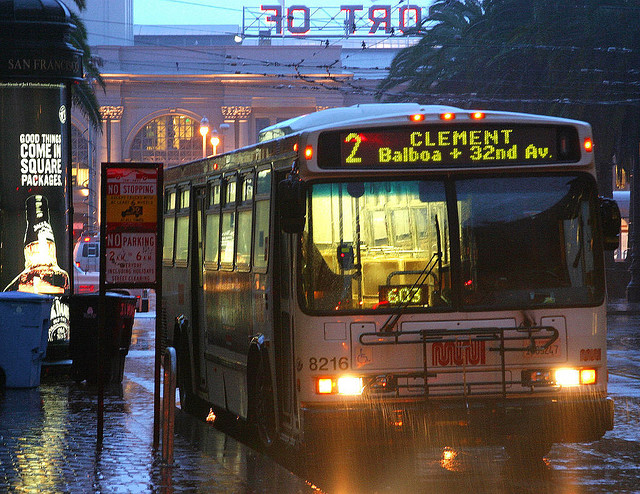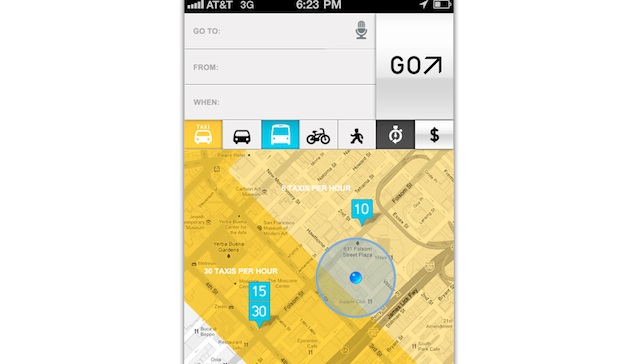Instead of relying on almost-never-correct schedules, Kicker Studio has come up with an innovative system to use the city's data streams to give up-to-date transit information. When can we start using it?

Unlike many cities, San Francisco offers a wealth of open data, with information available about everything from parking meters to public artwork. The trouble is, not everyone realizes quite how valuable this information can be. At last week's GOOD Design event, which pairs city leaders with designers--San Francisco director of innovation Jay Nath challenged Kicker Studio to come up with an innovative approach to educate the public on the value of open data. Kicker's solution: using data to help fix the city's busted transportation system.

Kicker had a slew of open data feeds at its disposal, including bus routes, incident reports, the fastest and safest routes, and parking information. After meeting with MUNI (San Francisco's transportation agency), Kicker discovered that NextBus--the system that updates riders on when the next bus is coming--runs off schedule data and only allows for four updates per year. That means in the case of any delays--and there are many--predicted arrival times are way off, and MUNI has no central communications system (drivers just write down incident reports and turn them in at the end of the day). Note: NextBus contacted us with updated information about this--see bottom of post.
So Kicker proposed using an SMS interface that allows for incident reports and for drivers to reroute their buses if, say, their services are needed after a ballgame and the scheduled routes can't handle all the people waiting for the bus.

Kicker even had a decent solution to the antiquated scheduling system with an interface that takes in data feeds related to traffic and traditional route timing to provide better estimates of when the bus will arrive. That same interface could allow users to crowdsource bus information, like whether there is a belligerent passenger on the 14 Mission line.

The best part of Kicker's presentation was a user interface (for phone or web) that shows the nearest bus lines, when the next bus is coming, which nearby routes are most common for cabs (they aren't always so easy to find), and where the best routes are for bikers--all using publicly available data. The interface could also tell users which method of transportation is the most cost and time-efficient.
Our only question: when can we start using these apps? At this moment, there are innumerable stressed-out San Franciscans wondering why the bus never seems to run anywhere remotely on time.
Update: NextBus tells us: The NextBus system generates the arrival predictions based on current and historical GPS data. This means that the arrival predictions take into account delays and traffic in real time. You can see more info at http://news.nextbus.com/how-nextbus-works-2/
[Images: Flickr user Thomas Hawk, Kicker Studios]
Reach Ariel Schwartz via Twitter or email.